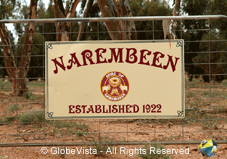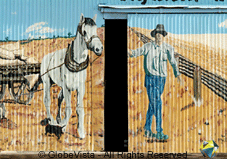Brief History of Narembeen


Narembeen is located in the heart of the wheatbelt, 280km east of Perth in Western Australia. The original townsite was located at Emu Hill, 5km out of the current townsite, but was relocated after the building of a pub.
The area was first surveyed by John Septimus Roe during his exploration of the state’s mid-west in 1836. He camped on a rocky outcrop where he had seen emus and named it Emu Hill.
During the 1850s small groups of European settlers moved into the area looking for pastoral land for wheat and sheep. They were joined by sandalwood cutters who roamed the area looking for the fragrant wood that was sold to China and the Orient. Charles Smith settled near Emu Hill on a 60,000acre (24,300ha) property and named it Narembeen, which was the name the local Aboriginals called Emu Hill.


During the early 1900s, the area was opened up to farmers and in 1918 the townsite at Emu Hill was gazetted, but it never eventuated. By the 1920’s Emu Hill was a large farming centre in need of a hotel but the local community opposed the plans to build a pub/hotel. A Perth Lawyer, Henry Dale and a Perth publican (hotel owner), Paddy Connolly seeing an opportunity, purchased 30 acres (12ha) of land at Narembeen and built a pub. By 1925, Narembeen had a population of 2,100 and Emu Hill was no more. The townsite was officially declared in 1968. Narembeen is now an established agricultural region producing a variety of cereal products and livestock.
